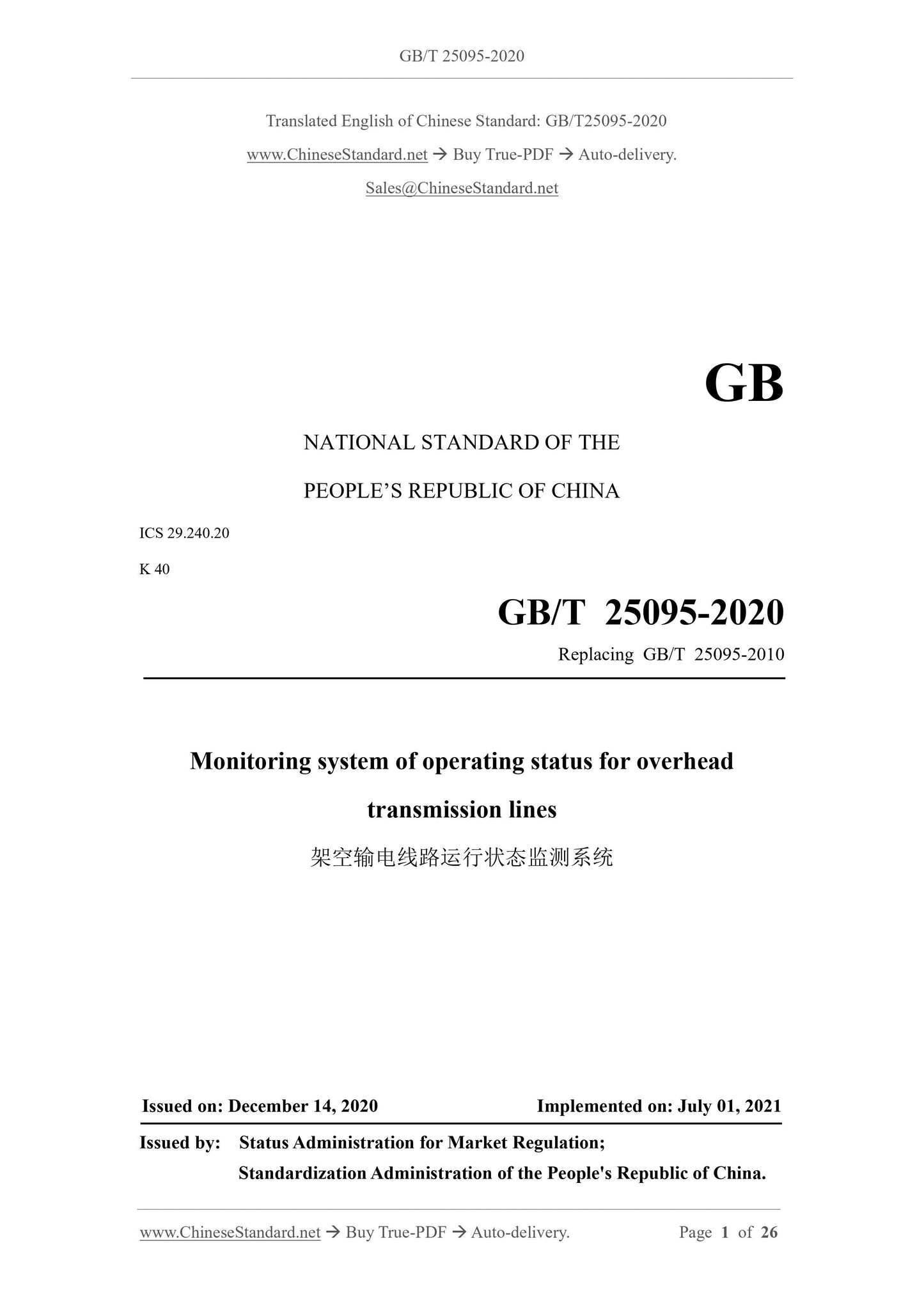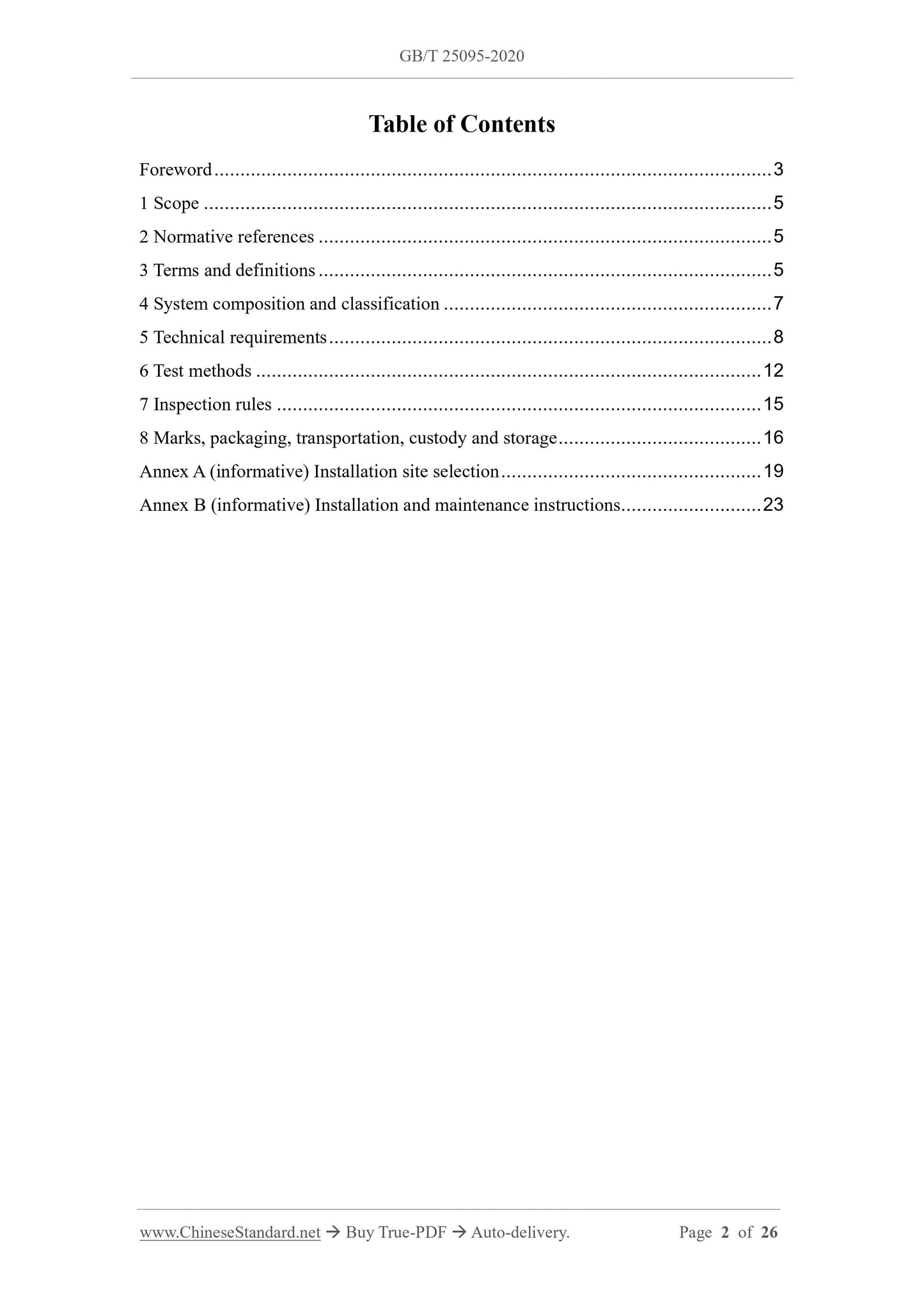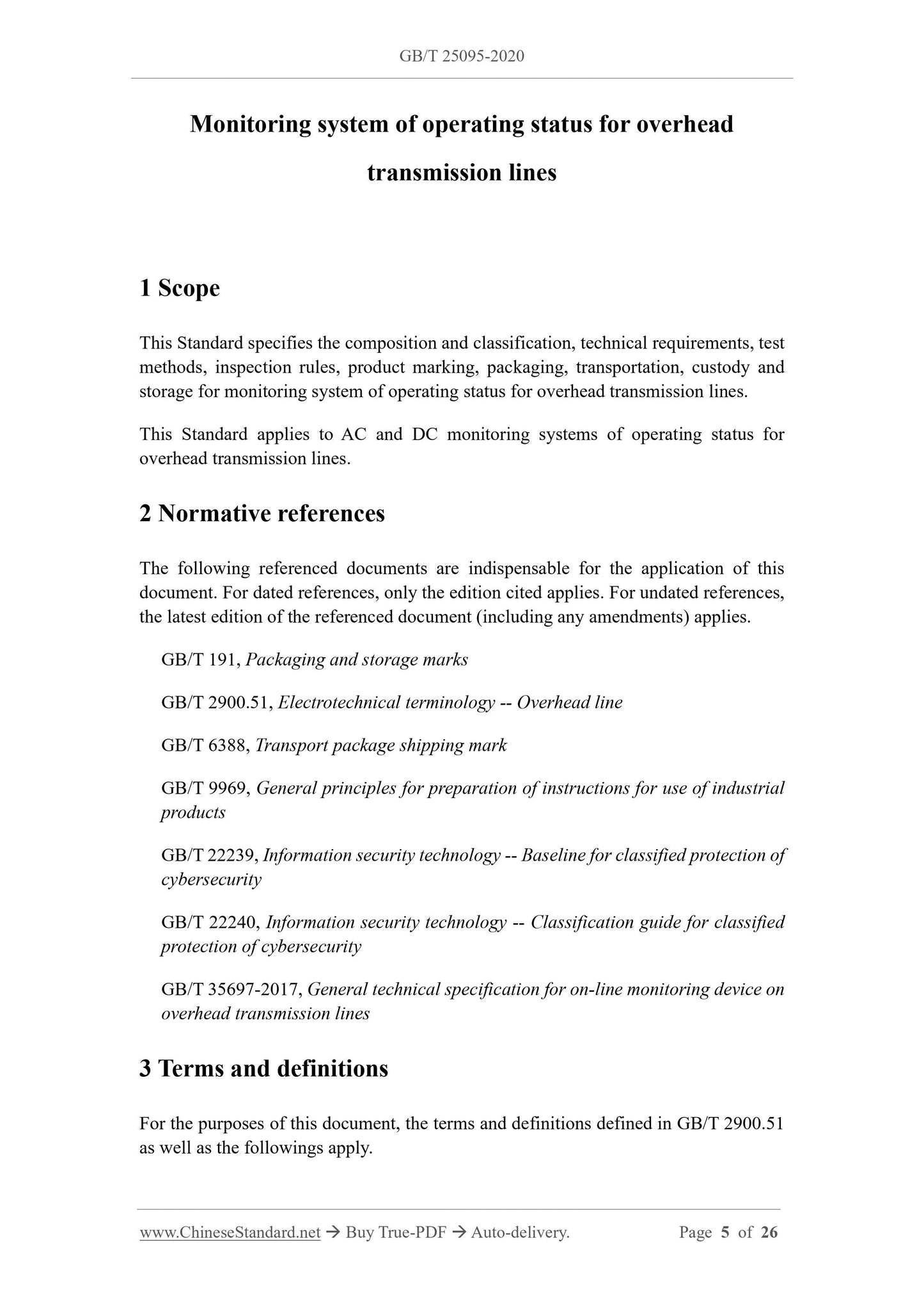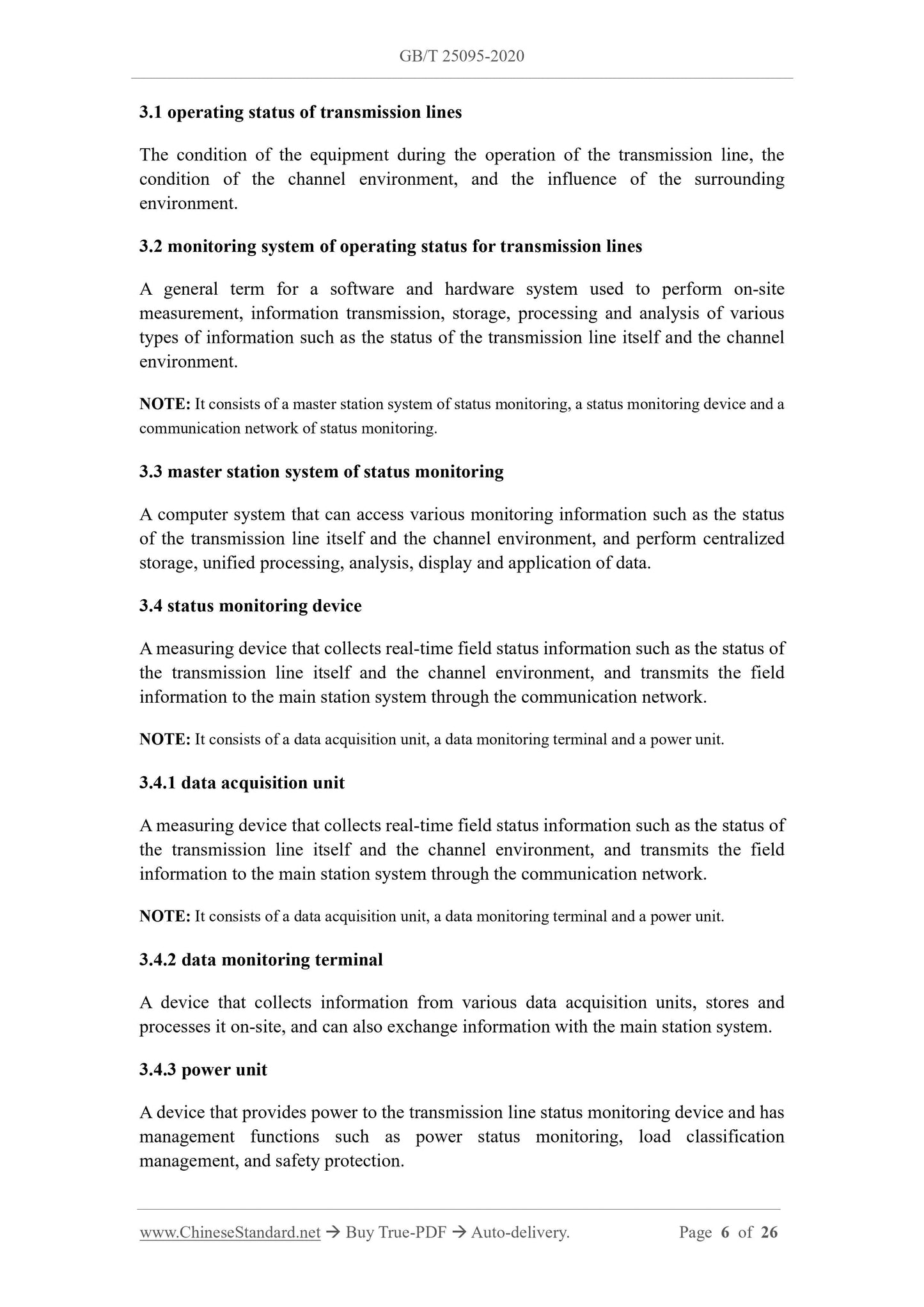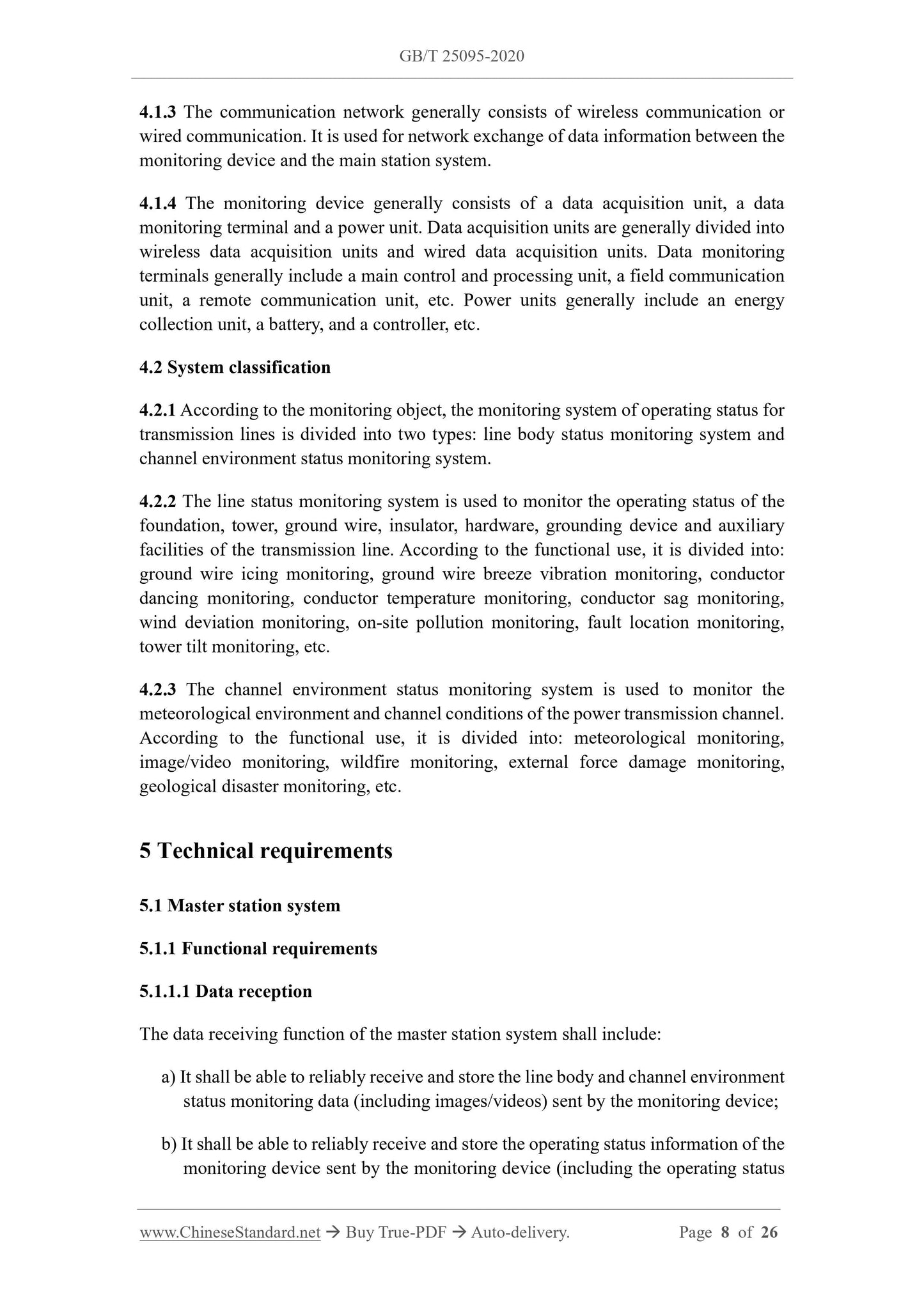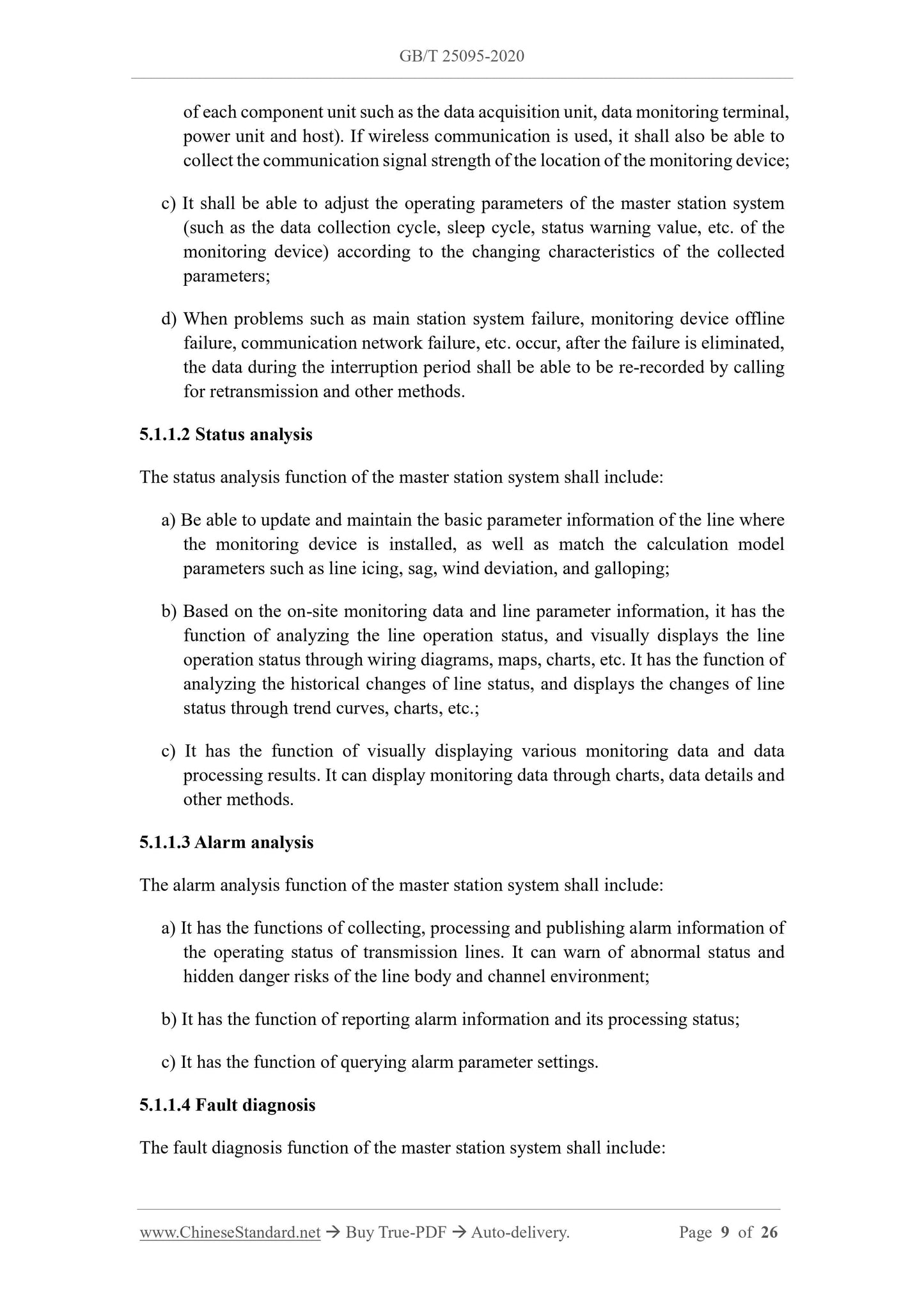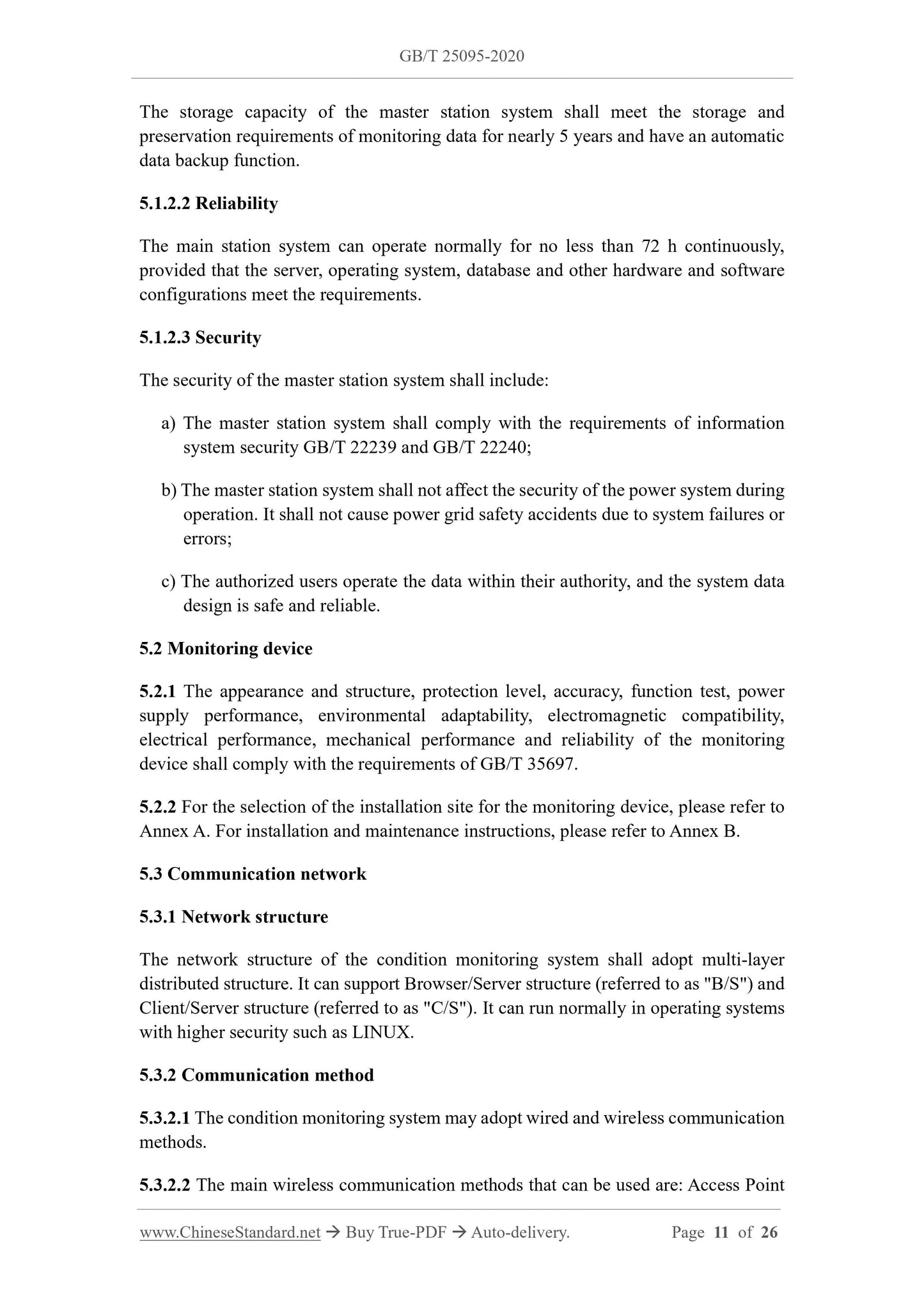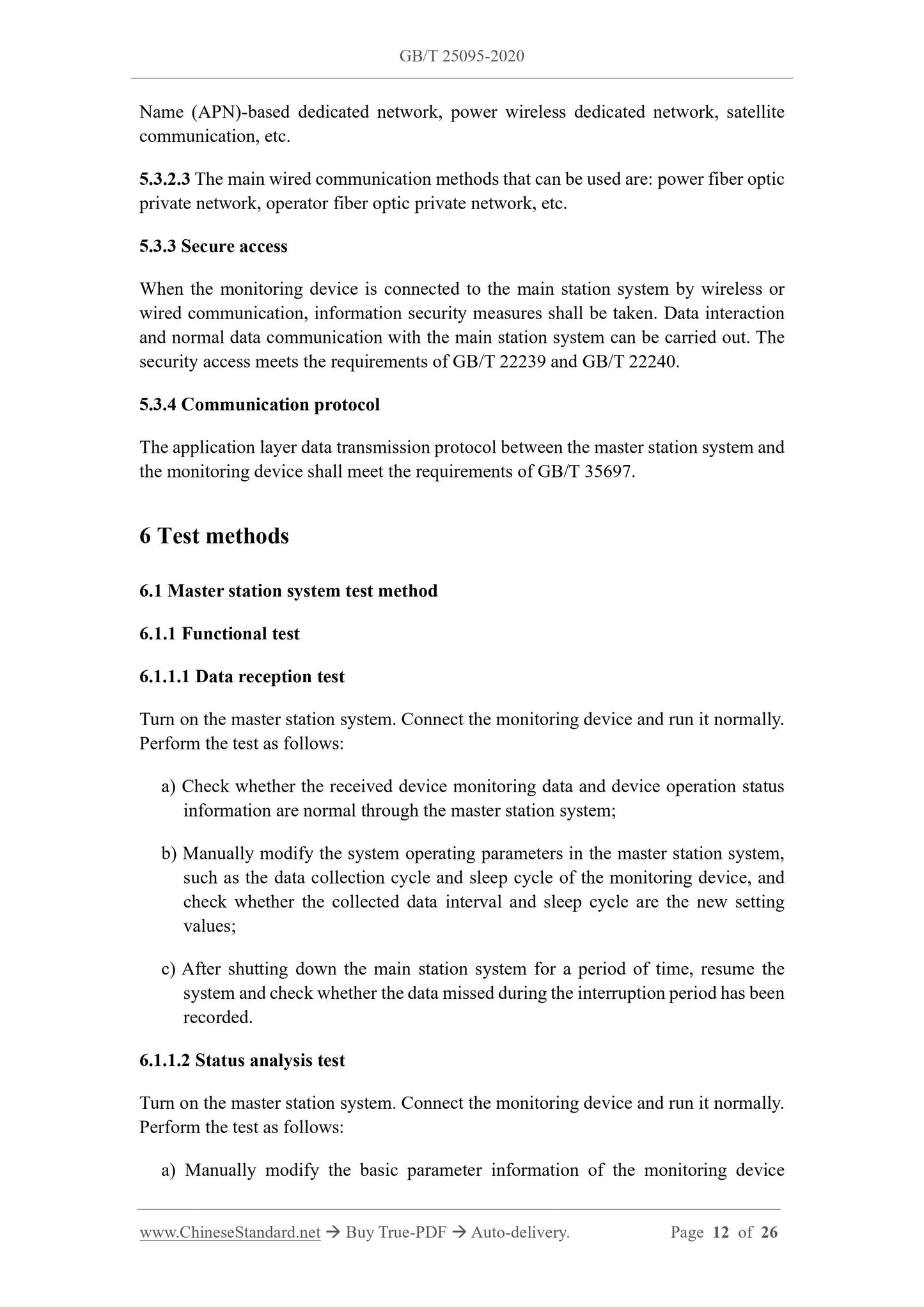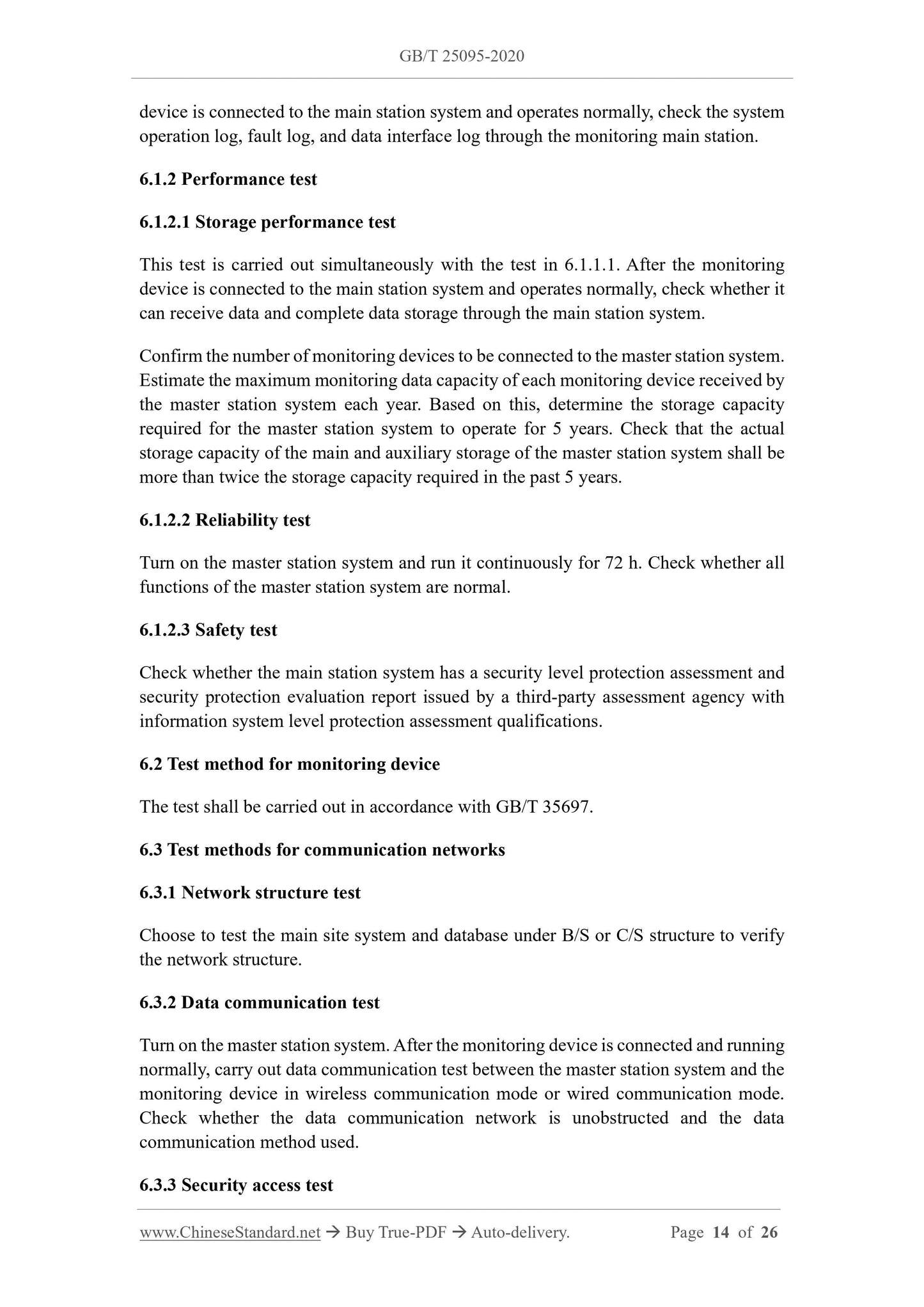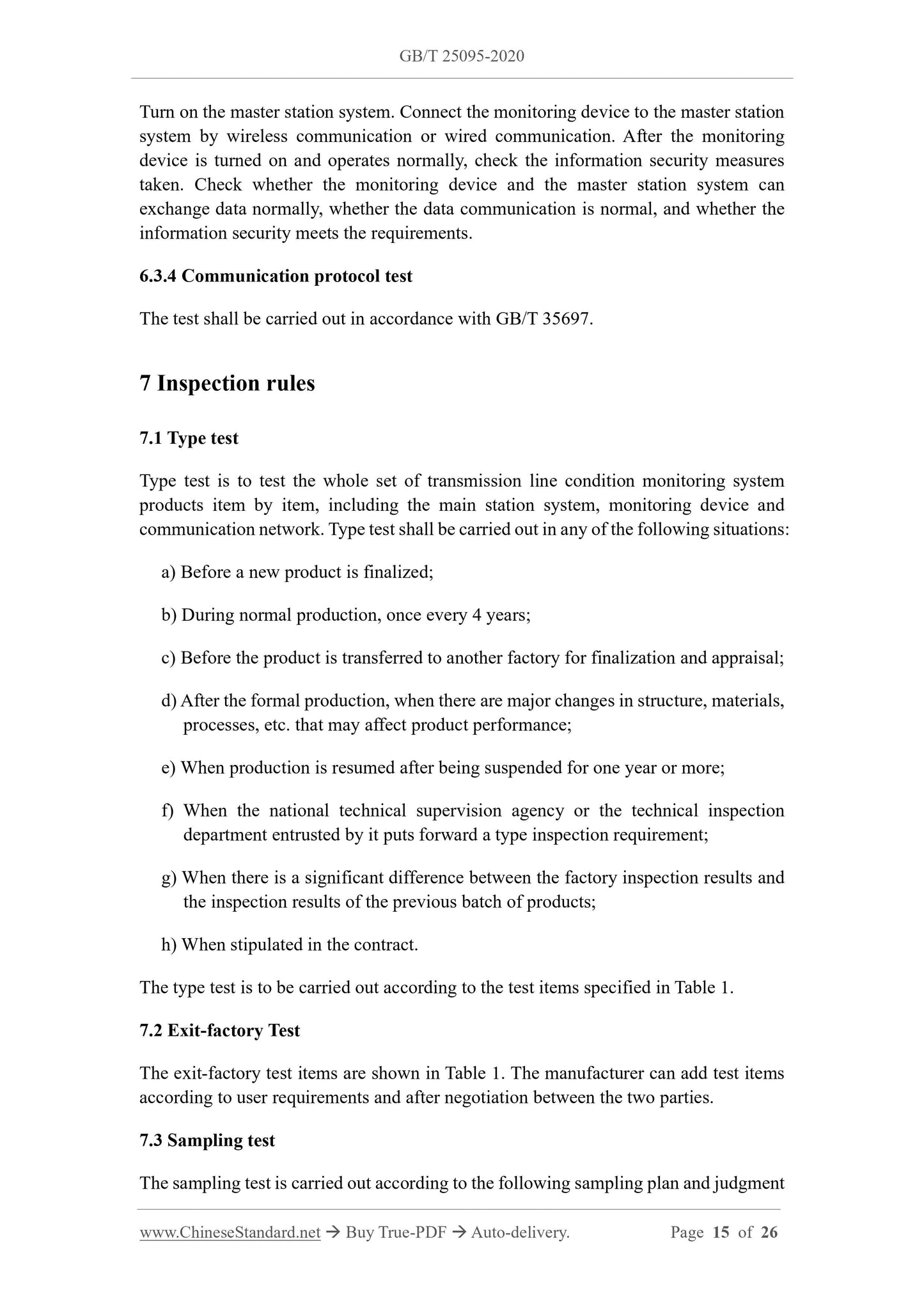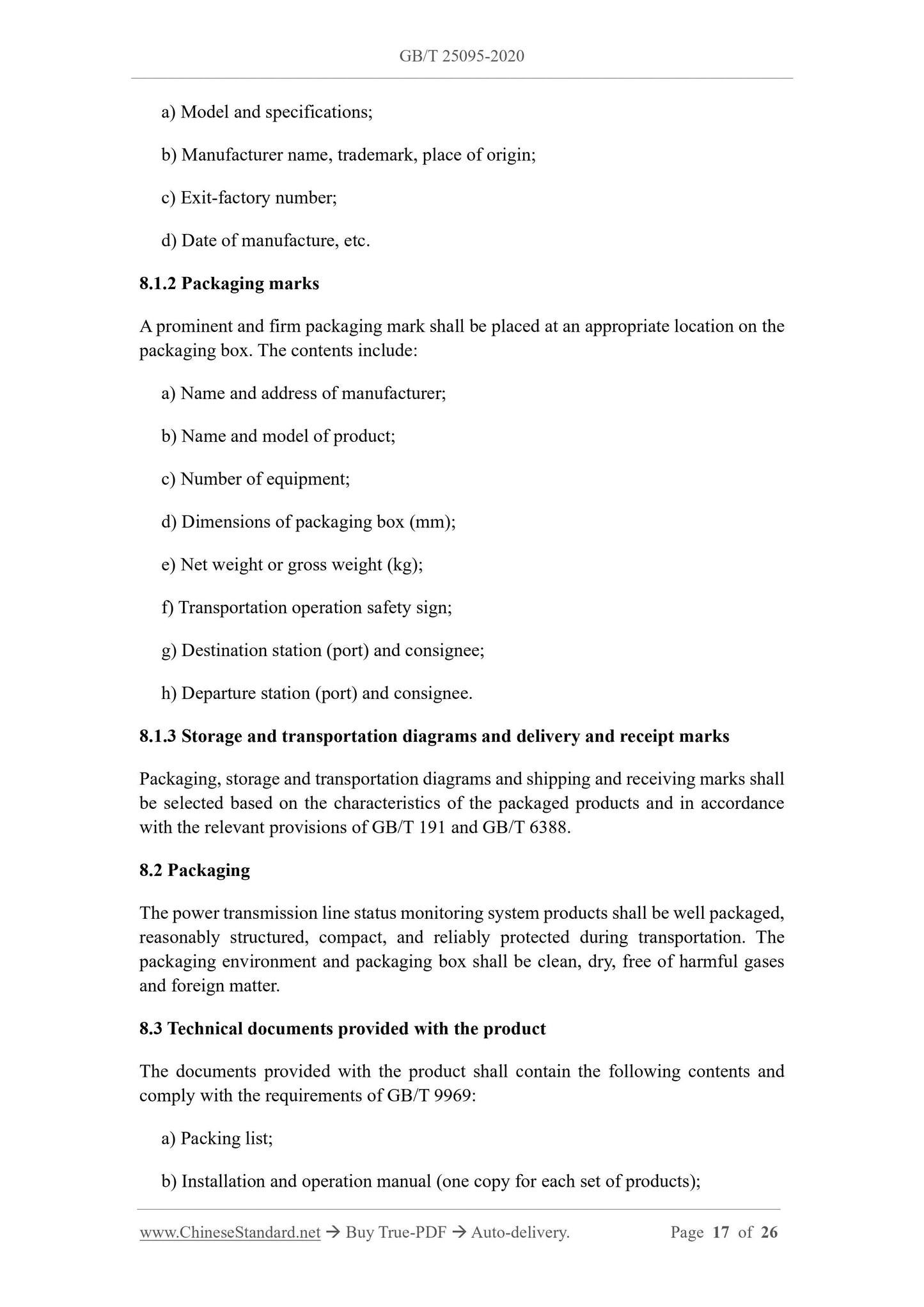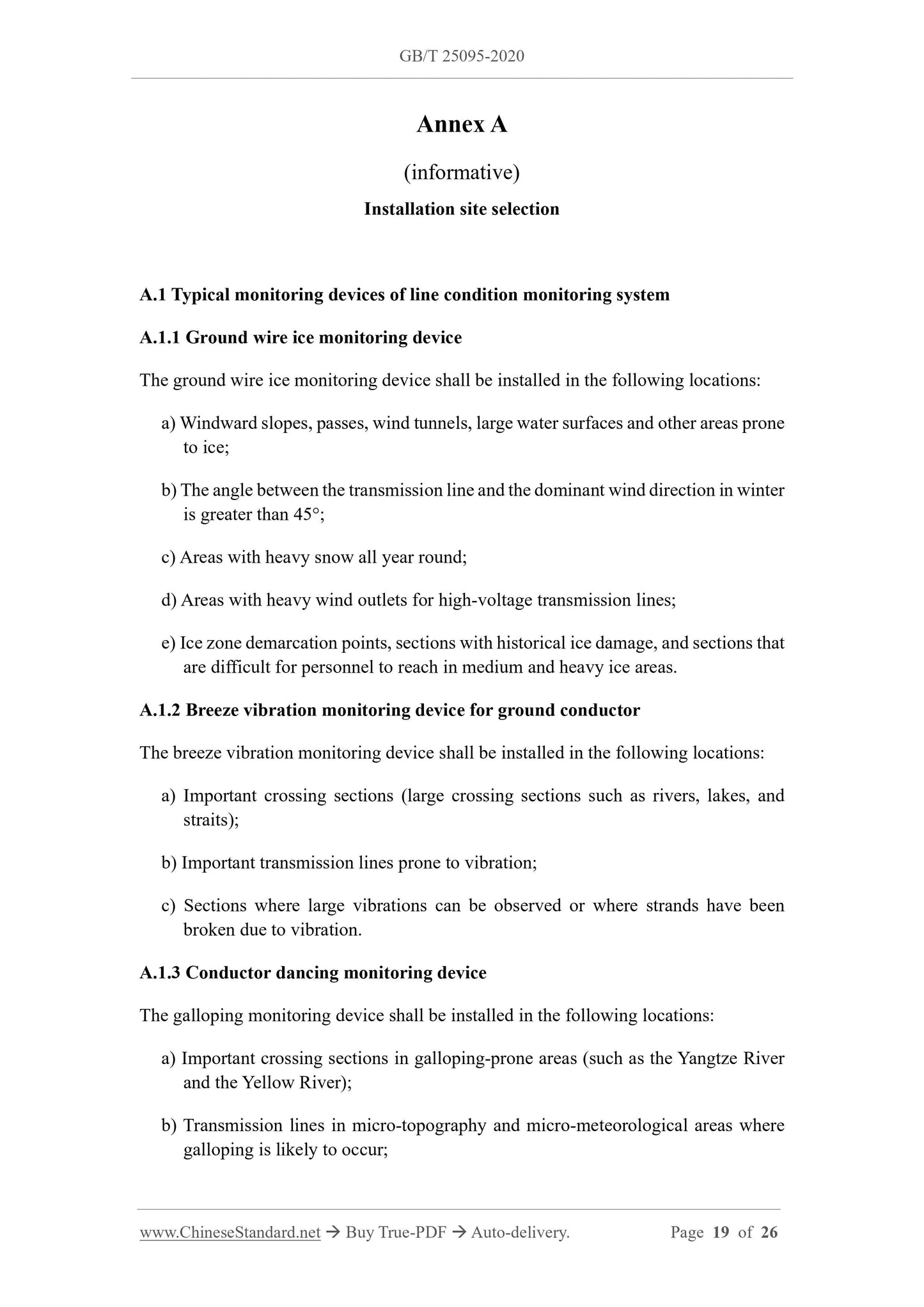1
/
of
12
www.ChineseStandard.us -- Field Test Asia Pte. Ltd.
GB/T 25095-2020 English PDF (GB/T25095-2020)
GB/T 25095-2020 English PDF (GB/T25095-2020)
Regular price
$260.00
Regular price
Sale price
$260.00
Unit price
/
per
Shipping calculated at checkout.
Couldn't load pickup availability
GB/T 25095-2020: Monitoring system of operating status for overhead transmission lines
Delivery: 9 seconds. Download (and Email) true-PDF + Invoice.Get Quotation: Click GB/T 25095-2020 (Self-service in 1-minute)
Newer / historical versions: GB/T 25095-2020
Preview True-PDF
Scope
This Standard specifies the composition and classification, technical requirements, testmethods, inspection rules, product marking, packaging, transportation, custody and
storage for monitoring system of operating status for overhead transmission lines.
This Standard applies to AC and DC monitoring systems of operating status for
overhead transmission lines.
Basic Data
| Standard ID | GB/T 25095-2020 (GB/T25095-2020) |
| Description (Translated English) | Monitoring system of operating status for overhead transmission lines |
| Sector / Industry | National Standard (Recommended) |
| Classification of Chinese Standard | K40 |
| Classification of International Standard | 29.240.20 |
| Word Count Estimation | 17,180 |
| Date of Issue | 2020-12-14 |
| Date of Implementation | 2021-07-01 |
| Older Standard (superseded by this standard) | GB/T 25095-2010 |
| Quoted Standard | GB/T 191; GB/T 2900.51; GB/T 6388; GB/T 9969; GB/T 22239; GB/T 22240; GB/T 35697-2017 |
| Regulation (derived from) | National Standard Announcement No. 28 of 2020 |
| Issuing agency(ies) | State Administration for Market Regulation, China National Standardization Administration |
| Summary | This standard specifies the composition and classification, technical requirements, test methods, inspection rules, product marking, packaging, transportation and storage, etc. of the monitoring system for the operation of overhead transmission lines. This standard applies to monitoring systems for the operation of AC and DC overhead transmission lines. |
Share
